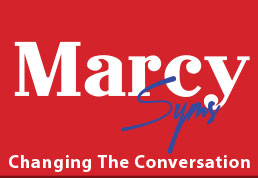Many private business owners buy into the hype of taking their company public without fully understanding what they’re getting themselves into with an IPO.
Why? Because they look at an improving economy, the projected financial rewards, and a “way out” which can be quite tempting. In many ways, IPOs may not be the best answer to raising capital. If you are finding yourself overly eager to take your company, you might want to take your blinders off, and look at the real picture. I know, because I’ve been there… there and back.
In 2014, companies that have already priced IPO’s are on the rise significantly compared to the previous year.
In 1959, my own company, Syms Corp., was founded and we took it public in 1983 when off-price retail was a hot ticket on Wall Street much like technology companies are today. Even though I didn’t take the helm until 1998, I got to see first-hand the tremendous difference between running a private company verses a public one.
When we made the acquisition of Filene’s Basement in 2009, we faced the challenge of merging two very distinct cultures, one private and one public. There were many reasons why it was not smooth sailing, not the least of which was the intense focus by the financial community. Adding to this fervid scrutiny was the sea change in our retail niche as a result of the economic downturn of 2008 and the changing purchasing habits of the consumer.
Without adding the extra pressing of quarterly reporting to shareholders and the street.
In the 1980s Syms was considered a successful mid-cap public offering. It generated wealth for its shareholders and also helped to create new jobs. It also was the catalyst to help establish the Sy Syms Foundation, which has supported charitable, educational and cultural organizations for more than three decades. As is the case when any company goes public, my father and his colleagues on the board of directors ceded some control, but they did it without compromising the original Syms mission: to offer budget-savvy consumers great deals on designer clothing.
Today, Syms would be considered a micro-cap, utterly dwarfed by the mammoth corporations that dominate the business landscape. Yet, as a publicly traded company, it would be required to follow the very same regulations as its much larger counterparts, including Sarbanes-Oxley requirements (which sets new and enhanced standards for financial governance). These stringent guidelines didn’t exist during my father’s tenure. This isn’t to say executives at public companies don’t or can’t manage this slippery slope, but it is definitely a challenge to say the least.
Most private business owners I know understand these regulations only too well and can cite them chapter and verse. But that doesn’t mean they’re prepared for the crushing financial pressure that comes along with compliance — the loss of autonomy, and the scrutiny of both shareholders and Wall Street. And it hits smaller public companies that much harder.
Mary Jo White, the charismatic and forward-looking Chair of the SEC, has recognized the need to adjust regulatory expectations for different size businesses to get rid of the “one size fits all” approach to regulation. But even with her lead, any movement on the federal level will take time.
Having been down this road, I urge private firms to cherish their independence and resist the temptation. The overwhelming majority of business owners I know take tremendous pride in their organizations. They’ve invested more than just monetary resources in them; they’ve staked their reputations and, often, their senses of self and purpose in them. Ceding control via an IPO, or private equity firms and hedge funds, can quickly erode the personal relationship you have with your company — a difficult thing regardless of the short-term payoff or the potential long-term reward. Even firms that go public and stay viable for decades aren’t necessarily able to keep their original missions intact or their founders at the helm. There are always unintended consequences of cashing out that can’t possibly be anticipated.
If company leaders knowingly look at the IPO as an exit strategy, then it may well be a viable scenario. But for principals of small to mid-sized businesses who are personally invested in the long-term stability and viability of their enterprise, I would suggest a dose of skepticism and thinking twice before taking their company public.
